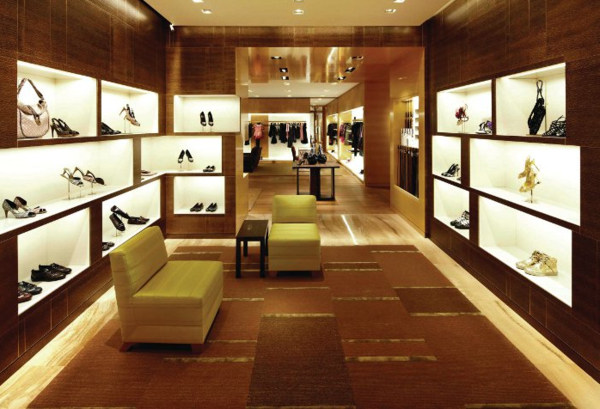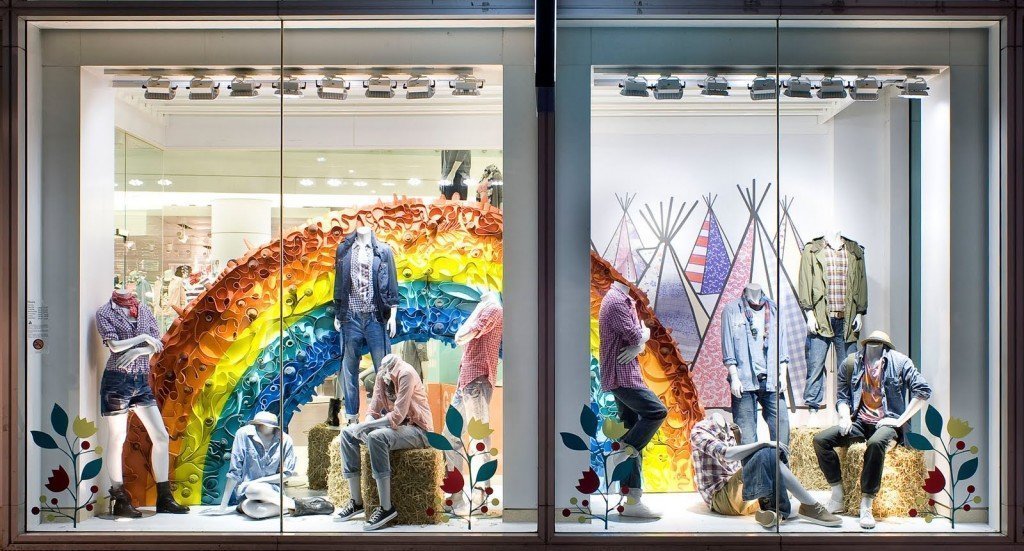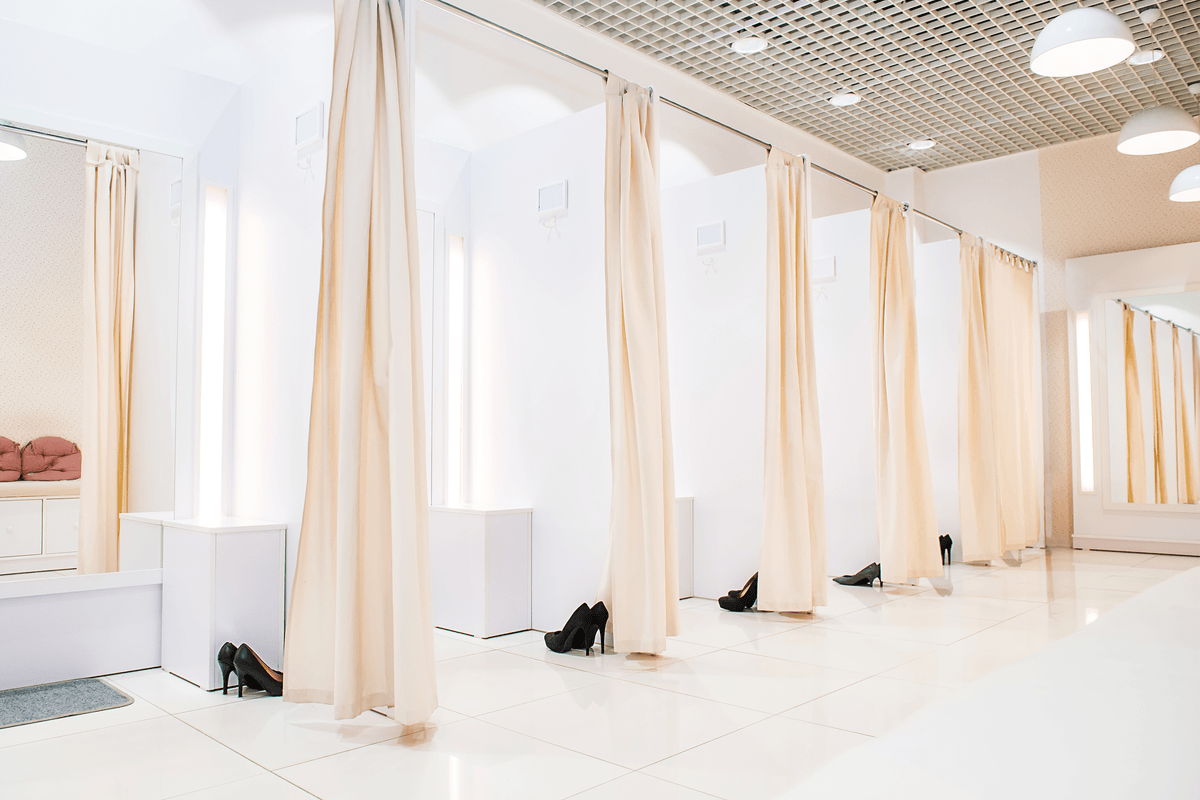Accensus est praecipuus factor in creando singulare shopping environment: copia quae clientes allicit et trahit eos in promptu personalitatis creat dum notam et identitatem involvit.
Prosperum scruta lucens non una mensura omnibus convenit. Est opportuna fusione colorum, contra, temperantia, vis efficientiae. Praeter scientiam et experientiam applicationis, etiam opus est uti postremae technologiae illustrandae ad technologiam recte applicandam et illustrandam. Clientes qui circa experientiam mercaturam suam excitantur diutius morabuntur, plus pecuniae impendent, non solum reditus verisimilius sunt, sed etiam reditus similes.
LEDAPLUS docebit te per processum accendit scruta et fiet tua subsidia illustrandi. LEDAPLUS unice idoneus est ut subsidia thesaurorum accensis necessitatibus venditorum, varias systematum accendendi inclusos vestigiis, recessis, et ornamentis illustrandis ad conservandum recentes et recentes custodiendos. Tempus accipit et operam ut tua collocatio in lucendo ad ultimum restitui possit. Haec nos cum omni societate constituemus.
Metas lucendi Design
Quantitas et qualitas illuminationis, eius impressio producti, et influxus in specie venditoris areae sunt omnes factores ad bene illuminandum consilium.
Designatores varias notas clavibus considerare debent, cum illustrandis consiliis, inclusa lampade vita, ratio efficientiae, lumen sustentationis, color redditio et aspectus, dies integratio et moderatio, lux distributio, focus, sumptus, ratio temperantia, flexibilitas.
- Customers attrahunt: eos in copia trahe et eos per tuto et efficaciter deduce
- Fac enuntiationem: Confirma notam et imaginem, impressivam imaginem et pretium range
- Create pulchra shopping environment: Providete elit consolatione et felicitate
- Ostende bona: Highlight munus et ostentationem, augere colorem, textura et formam evitans fulgor
- Promovere productum et productum iudicium ad captandam emptio
- Admitte completionem venditionis
- Redigendum costs industria


Cum evolutione et progressu technologiae sicut Suspendisse ac tabulae, emptor iter non semper incipit ac finitur in copia. Brand, imago, et shopping experientia pluris sunt quam antea. Lucerna subsidia nuntia nuntia propria scrutantur; Lorem exspectationem ponit pro qualitate bonorum et universalem causam ad comparandum.
Eligendi ius illuminationis magni momenti est ad imaginem thesauri desiderati prominendam, clientium attentionem tendens et attrahens, ac amplificans amoenitatem fructuum ad emptionem faciliorem. Solutio deponens dependet a mercatu scopo, conceptu copia, et notam imaginem; optima lucens te a competitoribus tuis distinguet.
Bene-accensa tabernae quaestus directe afficit. Potius quam augere splendorem in copia, et sic augere claritatem in terminis energiae consumendi, satius est uti summus discrepantia illuminationis ad perceptionem faciliorem ac gradum attentionis emendare.
Diffusio generalis illuminationis sensum felicitatis praebet, dum verticalis illuminatio dirigit spatium faciliorem. Accentus explicatio explicatio sensus et appellatio exhibitorum productorum melioris sunt. Scena est vitae notam venditio. Princeps CRI luminis fontes et lux bene librata misce adhibenda est ut res quam reapse fieri potest propono.
Products, quotations, et ostendit saepe mutare in retail environment, ita et lucentis ratio debet habere excelsum gradus flexibilitate et potest providere novae et usque ad-ut-date speciem

Color, reflexio et contra
Sunt plures factores considerare cum lucendi a retail spatio: in negotiatione ostentationem, magnitudinem et figura spatium, in animo auditorium et intendebat nuntius ad notam. Multi elementa veniunt in fabula, ut color, reflexionem, contra, et industria efficientiam, quod faciunt retail lucens consilium felix.
Modo lucendi debet habere magna color; Eligendo lux cum dextro color temperatus et cri est crucial. Lucendi est clavis elementum in projecting et supporting copia imago; Non solum enhancing vultus et appellationis negotiationis sed afficiens affectum spatio se.
Duo unitates mensura sunt usus definiens lux fons color proprietatibus: correlated color temperatus et color reddendo index.
Omnis lux fontibus non aequales. Duo alba lumen fontes ut idem, sed potest reddere coloribus aliter vel providere alium sentire spatium. Per lampades idem correlated color temperatus et eadem vel simillima, color reddendo indices, spatium erit etiam constans illuminatione per.
Et reflexio et fulgor et utiles et in potentia noxia ad retail lucendi; Non potest attrahunt oculus ad mercandis, cum usus proprie sed irritare et laedo, cum usus male.
Using Luminaires cum boni fulgor reductionem values vitat directum et conturbant reflexiones in specularibus, ut nitidissimi fixtures, subcriptio screens et pin pads.
A valde clara copia non est maxime efficax lucentis solutio. Usura e contrario ad highlight merces et diversis areas de spatio, adjuvat customers sentire magis comfortable et trahit operam ad featured merces.
Correlated color temperatus
Correlated color temperatus, aut CCT est mensura lucerna color aspectus. Omnes lucernas dantur a color temperatus secundum colorem lumine emittitur. Alba lux cadit in tres genera genera: calidum, neutrum, et frigus, metiri in Kelvin (k). Alba lux cum admonitus flavo, sicut candelae dicitur "calidum album" (infra 3000K); Eam aucta reds et aurantia, hebetes A Cappella et adiungit a flavo color ad alba et vireta.
Neutrum White (3000k - 3500K) Enhances maxime coloribus aeque et non potest vel flavo vel caeruleo. Beluis albus, sicut lunam in nivis, consideretur "frigus albus" (supra 3500k); Enhing A Cappella, hebetes reds, et dat caeruleo color ad alba et vireta.
Fove lucem facit spatium sentire minor, magis comfortable et nota, ubi frigida lumen facit spatiosam. Neutrum lux improves in sensu bene esse, quod potest extend moles tempus mos impendit in copia, ducens ad emptio.
Color Rendering Index
Color Rendering Index, aut CRI, est mensura quomodo lucem fontem reddit colores obiecti comparari quam referat lucem fons reddit idem colores. CRI potest comparare fontes eiusdem generis et Cct.
A palette de specifica colores adhibetur, et cri calculation est differentia inter se colorem specimen illuminatum per test lux fons et referat fonte. In coetus ex exempla averaged, et score inter 0 et C est ratione, cum C esse optimum par inter lucem fontibus.
In altiorem in cri de lumine fonte, in melius - et magis naturalis - coloribus apparent. Nam products ut sistatur in vera-ad-vita via, quod crescit copia scriptor credibilitate, in CRI valore de LXXX - C est suadetur.
Reflexio
Reflexio lucis off de variis superficiebus in spatio debet reputatus in luminatione consilio. Cum superficiebus cum altiorem reflectance sunt, lux reflectitur in spatio, et altius illuminance campester sunt creata. Lux reflectance fundatur in scale 0, totalis superficiem lux effusio, ad C, totalis lux reflexio.
Damnationem reflexio materiae, ut arbustum aluminium, habere altum, quamquam diffusa, reflexionem, reflectendo 5-10% luminis. Diffusa reflexio materiae, ut simplex album picta murum, date uniformis claritas et bona reflectit backgrounds ad Coves et minor spatia. In addition ut reducitur industria costs, albus et lux-reflective superficies auxilium redigendum obumbratio a quatit et reclinant bona.
Contra ratios
Retail environments postulo ut et patronos sentire comfortable dum excitatur momenti merces et copia areas. Simpliciter augendae claritas non solum a perditio electricity sed etiam non efficax. Splendida stores cum lots of fulgor facere customers inconvenientes et minus verisimile reditus. Clavis est layering lux et per contrarium per spatium.
Sunt quattuor basic stratis in grosso luminatione: Generalis lucendi etiam vocavit ambientium, accentu luminatione, opus luctantium et ornamentum luminatione. Mensus in footcandles, in Iesna est illuminantia gradu suasiones fundatur in genus lucendi, genus spatium, genus mos, et quomodo lucendi erit. Lyering haec lux, profundum et dimensionem additur spatium.
Contra est effectum per auctus est auctus illuminationem in diversas genera lucis, communiter negotium et accentu, ad commendandam featured merces contra communem lucem levels. Contra potest esse creare visual hierarchias intra retail environment, enabling attentionem ad esse instructa et focused in quaedam merces fundatur contra rationem. Exempli gratia, in II: I Contra Ratio, cum accentu accentu lumina duo tempora clarior quam generalis lucendi gradu creat vix cognoscitur contra. Sed in XXX: I Contra Ratio erit creare fortis arx effectus in focalis items.
Quisque genus lucendi habet multas options, et per incorporating suadeo lucis levels et contra rationibus, finis effectus est spatium cum altum visual interest, profundum, et dimensionem.
Optici perficientur
Euismod elit et lampades et integrated Luminaires:
I. Visivae lux super superficiem
II. Numeri perficientur, lux campester, et efficientiam
III. Visual species et fulgor imperium in luminaire ipsum
Layers luminis
Sunt quattuor layers lucis typically in grosso lucentis: Generalis (etiam vocavit ambientium) lucendi, opus luctandi, accentu luminatione, et ornamentum luminatione. Combining et aspera haec lucentes genera dat visual interest ad spatium et gignit magis attractive, excitando, et invitant environment.
General dolor
General dolor est pelagus fons illuminationis in spatio. Hoc uniformis, basi gradu lucentis potest facile facti sunt focus de industria reductionem, ut lux campester ab aliis fixtures potest submiseretur, praesertim cum usura duci fontibus.
Commendatur lux campester ad generalis lucendi est XXX – L footcandles. Cum minimam illuminationem de merces, communis luminatione concedit in virgam ad praestare cotidiana tasks ut Purgato et rursus stocking, tum mos circulationem per spatium. Diffunditur generatim accensu ensures a sensu bene esse, quod facit customers sentire comfortable et magis verisimile manere iam in copia. A simplex via ad consequi hoc est per dispositionem recessioned fixtures per reflectors, baffles, et lensed trats in imbricatis positiones.
Perimetro luminatione, aut murum lavacro, adjuvat definitionem mercandisfacere spatia, providet verticalem lucendi et facit retail spatio sentiunt maior. Fit cum lone vel malle washers, verticalis lucendi gignit iucundum, excipiens environment et adiungit ad visibilitatem et visual ictum ostentat muros. Is est maximus quod vertical superficiei sunt accensa ad visivae consolationem, spatiositatem, et visual et directional cues. Vertical claritas influxus customers, impressionem copia faciens orientation facilius, auxilio ad definias merchandising spatia, et in faciens spatium specie esse maius aperta et plus suscipit dolor.
Negotium lucendi
Negotium lucendi adhibetur ad illuminare an area in specifica negotium; Providemus focused, localized et altior lumina. Necesse est ad operationem spatium, est momenti ad industria-agentibus fontes ad redigendum operating costs.
Negotium lucendi est maxime cum usus est supplementum ad generalis lucendi in workspaces, colloquium locis et in countertops. Effective negotium lucendi debet eliminare obumbratio in specifica illuminated area dum ne fulgor ex lucerna vel off superficiebus.
Perpletio Sale est maxime momenti retail negotium; Est ultima commercium inter mos et virgam. Pendant luminaries ad punctum venditionis sunt magna via ad providere negotium lux ad venditionesque opus; Enabling virgam ad cito et verius involvent packages, run subcriptio venditio et fidem card transactions, minimizing errata et redit. Commendatur lux campester ad negotium areas sunt L - CC footcandles.
Cum luminatione negotium area, in rationem differentiam in claritate, vel contra negotium area et in circuitu. A III: I Ratio est opus luctandi ad generalem illuminationem providet a nice quod aestimandis merces, legendi Tags, pittment, aut packaging, et legere signa, quod identify copia departments.
Moles lucis opus in opus, aut luminance, quod plerumque est maxime flexibile variabilis negotium lucendi et potest auctus ad compensare pro humilis contraria campester.
Accentu luminatione
Accent luce gignit dramatic emphasis in negotiatione usura a focused, seu punctum, lux fons vel fontes. Addit profundum, contra et gignit a focalis punctum ad merces ut proponendum; Eam ornare figura, textura, metam, et color de merces, drawing customers ad eam. Si hoc lux ambiguum est finis, ut plures unwanted obumbratio a details de luce merces tum distracting fulgor.
Et clavis est ut hoc illuminatio magis praecise et superior intensionem quam ambiente ambientium lucem. Track fixtures, recessed housings cum Novifacta Criminibus, et absconditus Vocabulary illuminatione cum puncto Source Lamps providere directional potestate et maxime efficax ad accentu lumine.
Faciles adimam praecise ad luce products optima attributa et auctoritatem customers impressionem. Nihil communis error accentus accentus accentus lumine; Semper ut in mente, quod est tale aliquid quod providente nimium lucem.
Iesna commendat ad V: I Ratio accentu accentu lumine ad ambientium lucem facere merces sto sicco et creare a significant visual effectus; Notitia potest requirere altius ratio ad producat de detail. Commendatur lux campester ad accentum lucendi sunt inter CL - D footcandles. Nam pluma ostentat, superiore componit de XV: I aut XXX: I sunt, praesertim ad creare coruscent in jewelry aut crustal.
Ornamentum luminatione
Decorative luminatione servit dual proposito: non solum ad lucendae laminis in retail environment sed etiam ad augendae vultus spatii sicut consilium. Cornantur lucens includit pendentia, Victoria, chandeliers, mensam et pavimento lampadibus et cylindricibus. Decorative luminatione debet complement et addere visual interest ad interiora, tum providere vel conferre ad altiore lucendi consilium.
Pendants debet mounted VIII – XII pedibus super consummavi pavimento (a.f.f.) ita sunt adhuc intus intuitu, sed non nimis humilis ad deterrere shopping experientia. Pendants ostendi super calculis debet esse suspenderunt XXXVI – XLVIII pollices super planum horizontalem, ut customers potest pari in speculum sine impediebat a luminaire.
Murus Victoria et Wall-mounted cylindrici debet mounted circiter 5-1 / II pedes a.f.f.; Hoc adjuvat ad creare sensus humanae scale, praesertim in magna spatium.
Addit décor, pulchritudo, et style usura ornamentum luminatione est etiam momenti reflexionem de copia scriptor notam imaginem et confirmat in theme et modus spatium. Decorative luminatione potest conferre affectum hospitalis et consolari ad retail experientia, posito shoppers ad otium et hortatur longior visita, quod potest in potentia ad magis venditio.
Per combining et layering his luminatione genera, vestri copia environment erit magis attractive, excitando, et invitant.
Application Solutions
Multa factores ad assequendum magnum retail luminatione consilio; Finis finis est ad augendam venditio. Using luminatione intelligenter ad augendae merces et creare a sensu bene-ens ad Lorem augetur propensionem facere emptio. In Ledaplus, noster metam est creare statera inter lucraing effectus, affordability et adaptability. Nos offerre amplis de options ad optimize specie negotiationis dum obscuratis ongoing operating costs.
Fenestra lucendi
Omnis retailer est competing ad Lorem scriptor operam; Et retail fenestram occasionem ut stare de. Sit potens attractio, providente nexum inter transeuntes et merces in copia. Attrahunt customers cum drama; Passerby cum intensa alba lux usura uniformis saturated illuminatio, recta accentu accentu lumine ad highlight et definire merces, creare stetit potestate, quae faciet consumers vis venire interius et investimus in sales experientia.
An industria-efficiente solutio saepe neglectis in retail spatia lucem, quae adiungit aliud dimensionem ad altiore lucendi consilio. Intelligendo quomodo naturalis lux interacts cum spatio potest amplio visual appellationis negotiationis. Fenestram lucendi mutare fretus tempore. Durante luce horis, fortis accentus luminatione focused in proponendum merces mos attrahunt magis operam. Nocte usura
A humilis ambientium lucendi gradu, praeter fortis accentu accentu luminatione, erit apicem videntium interest.
In ostium requirit excelsum claritas certatim cum circumfluam et sub tegmine lucentis necessitatibus addidit gradus tutela. Claritas distincte patet ab extra et maiorem distantiis, ut non erit secundum forte creando primum impressionem. Et qualis est ostium dictat tua potential customers’ Praeterea actio, sive intrare vel non.

PLUTEUM, casu & Contra lucendi
Plerumque lucis spatia ad parva fontibus - ut tape lumen - proxima ad ostentationem obiecti sed occultatum. Est imperative ut showcase products creatively ad boost eorum appeal. Illuminance gradus 3-5 temporibus altior quam ambiente ambientium lucem, eleemosynamur negotiatione facile iudicium per elit.
Et lux source color temperatus et CRI debet electum diligenter ut non distort, damnum, aut mutare vultus de negotiatione ostendi. Via quod lux est dirigi onto crusta est crucial, backlighting possint producere potest producere magis attractive effectus, quam tantum usura accentu luminatione ad luminare merces. Infra gradu vade secundum quid, sed per targeting accentu accentus et / vel backlighting in inferioribus tertium de crusta, customers morari diutius, hortatur venditio.

Eculeo luminatione
Rack lucentis attrahit customers et sino facile iudicium de negotiatione. Ligans ratio impleret duo plenius illuminare merces et verius display color et texture. Cum constans mutantur ostentationem necessitates, est momenti ut hanc system flexibile. Contech track luminatione systemata sunt specimen, ut fixtures potest addidit, remota, aut movetur sine claudere potestatem ad track. Illuminance campester in negotiatione saltem tres ad quinque tempora altior quam ambientium ambiente campester.
Fuit cubiculum lucendi

Qualis amicientes volutpat lucens est imperative quod hoc est, ubi maioris emere decisiones fiunt. Summus qualitas lux cum magno color reddendo index debet providere forma et textura ad mercandis et colores apparent naturalis et tenti; Colore negotiationis reddere idem in convenit locus ut fecit in venditionesque areæ. Using lucerna fontes similes cris et CCNTS faciam res consistent inter duo spatia.
Most conveniens mansiunculas illuminatur per supra caput fluorescent Luminaires. Instead, miscere diffusa et directional lumen fontes cum bonam CRI ad providere ad blandimenta lucem. Hoc faciam utraque mos et negotiatione vultus eorum optimus. Propriis FIGNA Placement est essentiale ad eliminationem umbras, praesertim cum viewing images in speculis. In elit, non speculum illuminari debet.
Using Energy-Salvis lucendi Technologies in decet cella habet additum beneficium: et radiant minus calor. Hoc reduces refrigerationem onus et adjuvat ad amicientes mansiunculas magis comfortable, tum minuantur altiore industria costs.
Exitus & Subitis dolor
Contexerit praebet varietate summus qualis exitus et subitis lucendi fixtures ad arbitrium vestri locus. Cum general luminatione systems deficere, exitus et subitis lucendi dirige tutum exitum aedificii scriptor possessoribus. Si non exit non requiritur, in luminatione debet providere securitatem et consolationem usque ad generalis lucendi potest restitui. Contech scriptor exitus et subitis fixtures sunt probata ad summum salutem signa; testimonii vel excedens
NFPA101, NEC et UL294.
Dic nobis de Your Next Project
&
Free Lorem Admonitio Nunc!